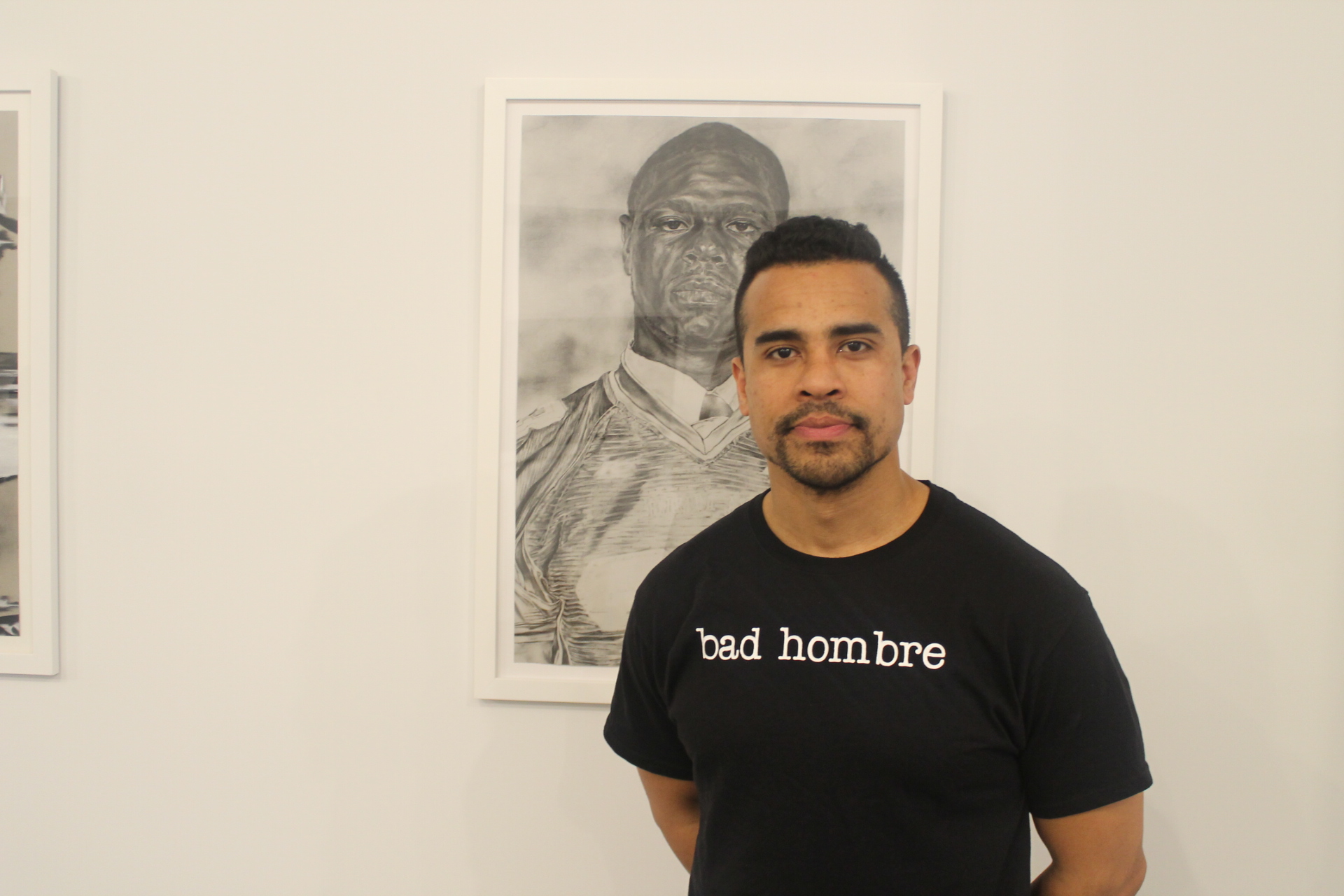
When minors in Brooklyn get busted in the coming months for misdemeanor offenses like drug possession or fare evasion, they may find themselves in an art gallery rather than in jail.
Artist Shaun Leonardo and SoHo nonprofit art space Recess have teamed up with Brooklyn Justice Initiatives to offer a “diversion program,” in which young people convicted of misdemeanors—in particular those who will be treated as adults by the New York State criminal court—can learn about performing the stories of their lives and about artistic decision-making, after which prosecutors have the option to close and seal the young people’s cases.
“The problem of mass incarceration has so much visibility,” Leonardo said in a phone interview, “that on every level, from the courts to the district attorney, there is a desire to look for solutions.” The US accounts for five percent of the world’s population but a quarter of its jail and prison population. Some 2.3 million were incarcerated in 2016, according to the Prison Policy Initiative.
The nine-month pilot program has now been underway for a month. During the first four weeks, participants learned techniques of nonverbal performance in Recess’s Brooklyn exhibition space, on Schermerhorn Street, among Leonardo’s drawings and video works. One such drawing shows Walter Scott fleeing police officer Michael Slager, who shot him in the back after a traffic stop in North Charleston, South Carolina; another shows the Cleveland park where officer Timothy Loehmann shot twelve-year-old Tamir Rice.
Shaun Leonardo, Walter Scott (drawing 3) (2015). Courtesy the artist.
Leonardo’s curriculum, partly inspired by Brazilian director Augusto Boal’s Theater of the Oppressed, involves starting with the artist offering prompts for how participants might frame their experience. He might suggest concepts of conflict, loyalty, or isolation, he said. “Right off the bat, we get into their experience with the police, the system, being defined as a criminal,” he says. “The stories emerge right away.”
Leonardo brings considerable teaching experience to the table. He’s manager of school, youth, and community programs at New York’s New Museum and has taught in settings like Socrates Sculpture Park as well as the Fortune Society, where he works with formerly incarcerated people, and The Point, a youth development program in the Bronx. (I participated last year in his performance work-cum-self defense workshop I Can’t Breathe, at the Cooper Union, which I listed as one of the most memorable works of 2016 in artnet’s roundup; a video of another I Can’t Breathe workshop screens at Recess.)
The stakes of the current program, he pointed out, are much higher since the youths are currently involved with the courts. But the program also goes beyond the court mandate: after the required four-week section, some participants will stay on to organize an exhibition combining their own work with Leonardo’s, getting paid fifteen dollars an hour for their work.
Allison Freedman Weisberg, founding executive director of Recess, stressed in a phone conversation that the outfit very much wants to “stay in its lane” as an arts organization, pointing out that the program came about through extensive conversations with the professionals in the court system. Participants may be directed to, say, anger management programs or drug treatment in addition to Recess’s program.
“Shaun and I worked closely with Brooklyn Justice Initiatives to capture the essence of what we hope to do,” she said, “which is to effect a shift away from popular language that is used to describe ‘the criminal’ and toward a nuanced description of oneself and one’s body with an acknowledgement of the systems that are up against you.”
She does, though, think Recess and Leonardo bring something special to the table.
“We believe that artists by their nature are creative problem-solvers, who can approach problems and social maladies using a creative toolkit that’s not accessible to all of us,” she said.
Leonardo is hardly the only artist to take an interest in the phenomenon of incarceration. Artists like Andrea Fraser, Deana Lawson, Danny Lyon, and Cameron Rowland have, over recent decades, addressed the subject, whether documenting prisons and imprisoned people directly or, in the case of Rowland’s powerful Artists Space exhibition last year, creating sculptures that highlight the way that prison inmates are exploited in larger economies.
The phenomenon has come in for attention in the broader culture, too, with only one example being Ava DuVernay’s lauded documentary 13th, which paints a grim picture of the prison-industrial complex in the context of the history of race in America. The film casts mass incarceration as part of the heritage of the Thirteenth Amendment, which outlawed slavery except in the case of imprisonment.
The film stresses the fact that people of color are often depicted as criminals in popular entertainment and the media in order to justify sending them to prison. That point is not lost on the participants in the program so far, Leonardo pointed out: “They’re incredibly aware of their position within the system,” he said. But, he said, through their involvement, “They gain the tools to see themselves outside how the system defines them.”
Leonardo teaching a public program at Recess on a recent Saturday. Courtesy Recess.
Leonardo is also teaching a series of Saturday afternoon public programs, drawing partly on 13th and on a prison abolition syllabus that includes books like Angela Davis’s Are Prisons Obsolete? and Michel Foucault’s Discipline and Punish: The Birth of the Prison.
“The system relies on its invisibility, so to do this kind of work only with those in the system would be an injustice,” says Leonardo. “It’s my responsibility to broaden awareness of the ways that black and brown bodies are branded as criminals. Until we counteract that, the system can’t be broken down.”